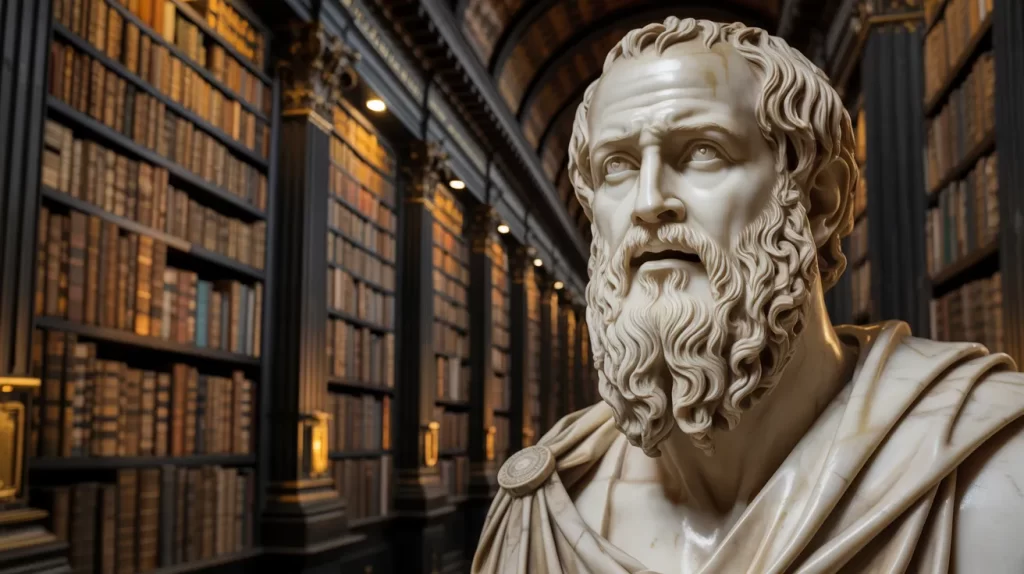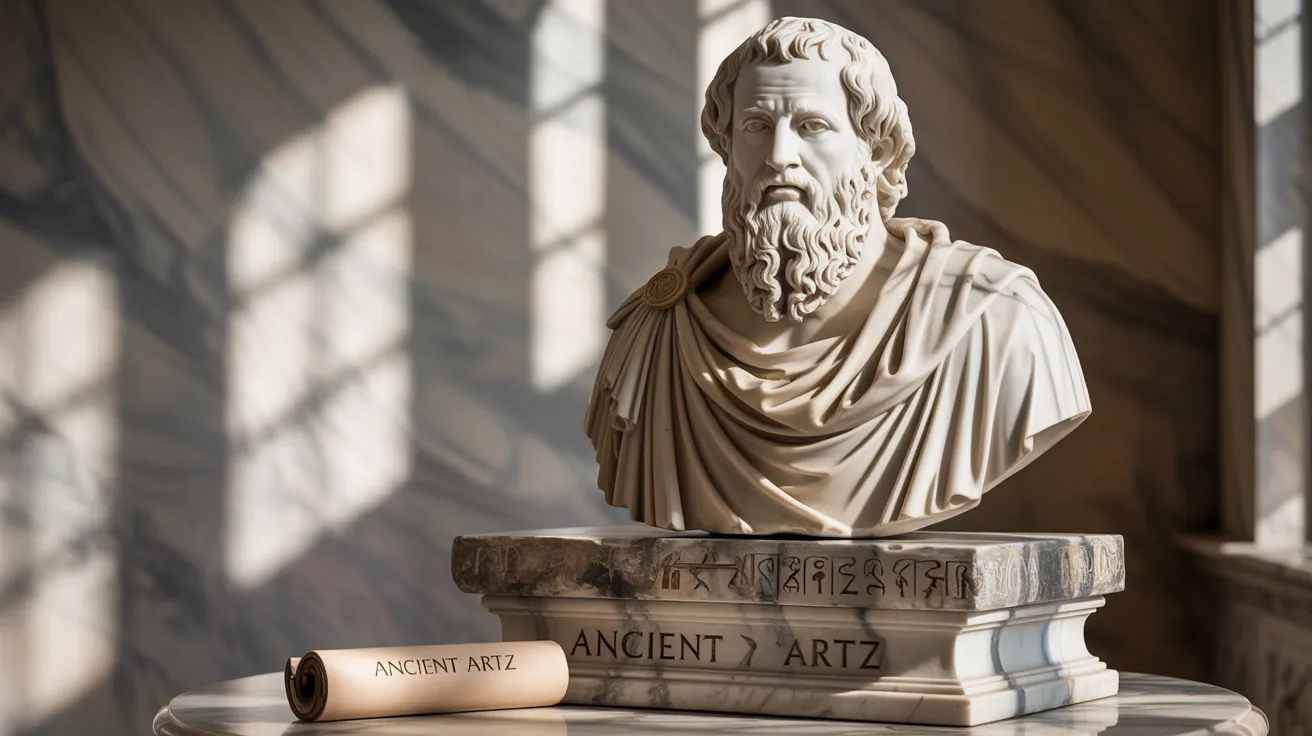Table of Contents
Art created by old civilizations, such as sculptures, pottery, murals, jewelry, and even large-scale buildings, is referred to as Ancient Art.
These artifacts served more than just an ornamental purpose; they were deeply intertwined with the beliefs, religion, politics, and culture of the society.
It reveals the different aspects of values, beliefs, and the lifestyle of ancient civilizations and indicates that art and culture were fundamental to human civilization.
The artistic works of ancient Egypt, Mesopotamia, Greece, and China shaped contemporary art and architecture profoundly.
The Origins of Ancient Artz

The origins of Ancient Artz can be traced back over 30,000 years to the Paleolithic period. Cave paintings and petroglyphs are thought to be the earliest forms of ancient art and were discovered in caves, including the ones in Lascaux, France, and Altamira, Spain.
Early cave art consisted of animals, human forms, and abstract signs, which were, perhaps, an attempt to express thoughts and ideas and might have been used in rituals or other forms of worship.
As societies transformed from nomadic hunter-gatherer bands to cultivation-based communities, art became more sophisticated.
People in ancient civilizations such as Mesopotamia, Egypt, and China started creating pieces of work that had both functional and cultural value.
Temples, tombs, and statues became important to religion and politics, and Ancient Art became intertwined with everyday life.
Read also: Keeper Standard Test
Symbolism and Meaning in Ancient Artz
An important characteristic of Ancient Artz is its symbolic representation. For ancient civilizations, art served as more than just an adornment.
It was a way to convey essential messages. In Egypt, for example, art was intrinsically linked to religion and life after death.
Tomb paintings, sculptures, and hieroglyphs were made to assist the dead in attaining immortality, assuming that these works would shield and direct them.
In Mesopotamia, rulers used art to convey divine approval of their rule. The Stele of Hammurabi, one of the earliest examples of law, shows King Hammurabi receiving laws from the sun god Shamash.
This artwork not only documented the king’s legal reforms but also reinforced his divine right to rule. In Greece, art reflected human ideals of beauty, balance, and perfection.
Greek sculptors like Phidias and Praxiteles idealized the human body, and their works, such as the statues of gods and athletes, still influence art today.
Cultural Impact and Legacy of Ancient Artz
The impact of Ancient Artz is vast, and its legacy can be seen in many forms of modern art. Ancient Greece and Rome, for instance, laid the foundation for Western art and architecture.
The principles of proportion and symmetry that Greek artists developed continue to be central to Western aesthetics.
Renaissance artists like Michelangelo and Leonardo da Vinci were influenced by the sculptures and ideals of ancient Greece, using similar techniques to achieve beauty and balance in their work.
Roman architecture, such as the use of arches and columns, continues to shape the design of modern buildings.
Even in contemporary design, the use of classical elements—like columns, symmetry, and the human form—can be traced back to ancient art.
Similarly, ancient jewelry and pottery styles still inspire modern craftsmen and designers. The intricate designs and use of materials such as gold and lapis lazuli in ancient Egyptian jewelry, for example, continue to influence modern jewelers.
Exploring Ancient Artz Through Museums and Digital Platforms
Today, Ancient Artz is widely accessible through museums and digital platforms. Major museums like the British Museum, the Louvre, and the Metropolitan Museum of Art hold extensive collections of ancient artifacts.
These institutions allow the public to view and study objects from ancient civilizations in their historical context.
Visiting these museums provides insight into how ancient societies expressed themselves through art, religion, and politics.
For those who cannot visit these museums in person, digital resources offer virtual exhibitions and high-resolution images of ancient works.
Platforms like Google Arts & Culture allow people to explore collections from around the world, making Ancient Artz accessible to a global audience.
Digital tools, such as 3D scans, also help preserve these artifacts and make them available for study, even if the physical objects are at risk of damage or destruction.
The Commercial Market for Ancient Artifacts
The trade in Ancient Artz is a thriving market, but it also comes with challenges. As the demand for ancient artifacts grows, so does the potential for fraud and misrepresentation.
Many online dealers and auction houses sell artifacts, but not all of them provide clear documentation of authenticity.
For collectors and buyers, it’s essential to ensure that they are purchasing from reputable sources who can verify the provenance of the items.
The legality of trading ancient artifacts is another important issue. Many countries have laws that protect their cultural heritage and restrict the export of ancient artifacts.
Buyers should be aware of the legalities of acquiring such items to avoid any potential legal issues.
It is also important to ensure that the artifacts are ethically sourced, as some pieces may have been looted or illegally obtained.
Where to Explore Ancient Art Around the World?
For those interested in seeing Ancient Artz firsthand, several places around the world offer access to these treasures. Some of the most notable locations include:
- Egypt: The Pyramids of Giza, the Sphinx, and the Egyptian Museum in Cairo house some of the most iconic artifacts of ancient Egypt, including mummies, jewelry, and the famous golden mask of King Tutankhamun.
- Greece: The Acropolis Museum in Athens is home to the Parthenon sculptures, and the National Archaeological Museum displays masterpieces of ancient Greek art, including the Venus de Milo.
- Italy: The Vatican Museums in Rome hold an extensive collection of Roman and Greek art, and the Colosseum offers a glimpse into the grandeur of Roman architecture.
- Mexico: The ancient Mesoamerican civilizations can be explored at Teotihuacan and Chichen Itza, where visitors can view the impressive pyramids and stone carvings that tell the story of these ancient cultures.
- Peru: The Nazca Lines and Machu Picchu provide insight into the artistic achievements of the Inca civilization, with its intricate patterns and advanced engineering.
Final Words
Ancient Artz continues to offer valuable lessons in creativity, culture, and history. These works are more than just relics of the past; they reflect the values, beliefs, and struggles of ancient societies.
From the monumental temples of Egypt to the idealized sculptures of ancient Greece, Ancient Artz has shaped modern art and architecture in countless ways.
While the commercial market for ancient artifacts presents some challenges, museums and digital resources ensure that these treasures remain accessible to people around the world.
Ultimately, the legacy of Ancient Artz is one of lasting influence, connecting the past with the present and providing a window into the artistic achievements of early civilizations.




